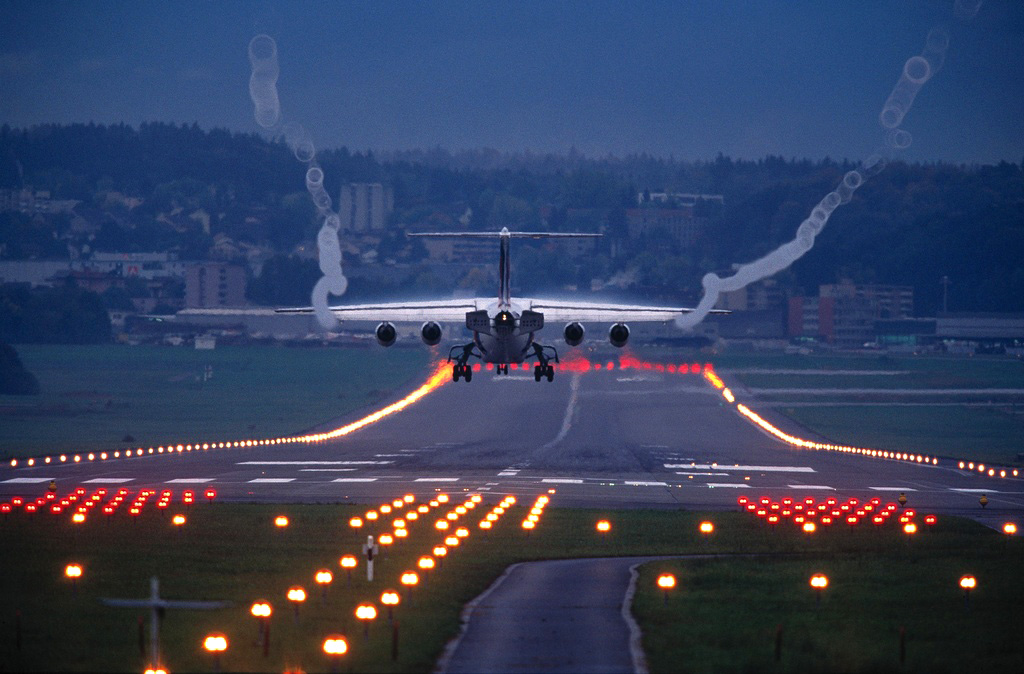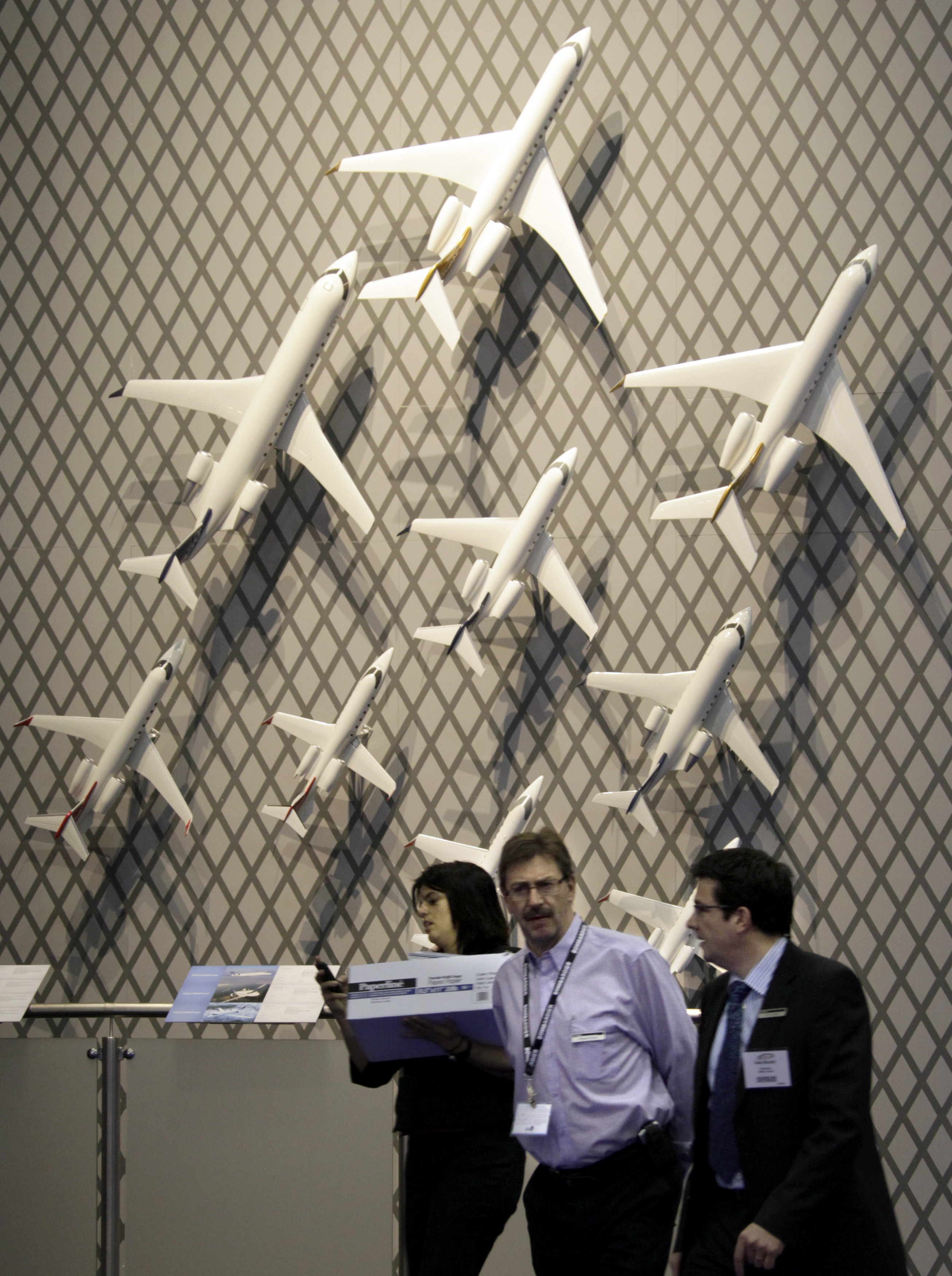Aviation biofuels hold “great promise”

Biofuels could be used on commercial airline flights in the next three years to help meet carbon targets, says the aviation industry.
Executives say that by 2050 advanced technologies, including biofuels, should go 50 per cent of the way towards halving emissions from planes from 2005 levels – their declared aim.
“Aviation biofuels hold great promise,” Paul Steele, head of the Air Transport Action Group, a joint lobby for airlines, airports and aircraft makers, told swissinfo.ch on Thursday.
“We have tested them and know they work and can be mixed with existing jet fuel safely. The challenge is to get the right quantities and make sure they are produced in a sustainable way and don’t compete with food or water supplies.”
The industry claims biofuels could reduce aircraft emissions by up to 80 per cent compared with traditional jet fuel, and be ready in the next three to five years. But biofuels are likely to be more expensive, complicated to scale up and trade, and are environmentally problematic, argue critics.
Steele was talking on the sidelines of a two-day industry conference on aviation and the environment in Geneva to look at progress on the industry’s environmental targets.
Aviation produces an estimated two per cent of manmade global greenhouse gas emissions and these could reach three per cent by 2050, says the Intergovernmental Panel on Climate Change (IPCC).
Over the past three years, airlines under the International Air Transport Association (IATA), backed by the aerospace industry and airports, have set targets for cuts in carbon emissions.
They include a 1.5 per cent annual increase in fuel efficiency by 2020, carbon neutral growth thereafter and a 50-per cent reduction in emissions by 2050 compared with 2005 levels.
Next-generation planes
Alongside biofuels, Steele said the industry was pushing ahead with new efficient modern aircraft and engines, better flight management and air traffic control and improvements in airline infrastructure.
“Improving fuel efficiency by 1.5 per cent a year by 2020 is a 17 per cent reduction in fuel use per passenger per kilometre, which means investing in 12,000 new aircraft costing $1.3 trillion,” he explained.
The next-generation of more efficient long-haul planes will soon start appearing, including the Airbus A380, the Boeing 787 and the Airbus A350.
Weight and energy savings are being looked at everywhere: aerodynamic improvements to the plane body, wings and wingtips, lighter composite components, and even new paints that weigh 20 per cent less.
New engine designs, like open rotor engines, which will enter into service in the next ten years, will offer up to 30 per cent fuel improvements over existing models.
Zig-zag routes
Efficiency can also be improved in the air, say executives. It is estimated that up to eight per cent of all aviation fuel is wasted as a result of inefficient zigzag flight routes.
“If you fly from Lisbon to Moscow you pass through tens of different air traffic management zones and you are often directed around corners to avoid military airspace,” explained Steele.
New air traffic management schemes like the Single European Sky ATM Research programme and the Next Generation Air Transportation System (NextGen) programme in the United States are expected to provide considerable savings as they extend.
And changes to flight and ground procedures, like continuous descent operations without “levelling off”, which requires engine thrust, single engine taxiing, cutting the use of energy-thirsty auxiliary power units at airports and better runway coordination could save hundreds of thousands of tonnes of fuel if more widely adopted, say executives.
IATA is confident that it can meet its targets. But as Keith Hayward, head of research at Britain’s Royal Aeronautical Society, told The Guardian newspaper, there is “only so far the efficiency curve can rise”. Radical plane designs will be needed to make much of a difference, he added.
Global approach
Industry executives warned on Thursday that they needed a global and coordinated approach from governments to issues such as aviation emissions, flight paths and to stimulate the biofuels industry.
Meanwhile, policymakers are keeping the airline industry firmly in their sights to make sure it delivers reductions in the short-term.
“Time is not on our side. To address global climate change effectively, we also need to see significant emission reductions before 2020,” Christiana Figueres, executive secretary of the United Nations Framework Convention on Climate Change (UNFCCC), told the meeting in a video message.
“Your sector has been proactive and I welcome that … but we face major challenges and the aviation sector holds some critical keys,” said the UN climate chief.
According to the aviation industry, air transport moves over 2.2 billion passengers annually and generates a total of 32 million jobs globally.
Aviation traffic is expected to continue to grow annually by 5%.
Planes burn around one billion gallons of air fuel per week, which may rise to 3 billion gallons/week by 2050.
Air transport’s contribution to climate change represents 2% of man-made CO2 emissions. It could rise to 3% by 2050, says the IPCC.
Over the past three years, airlines under the International Air Transport Association (IATA), backed by the aerospace industry and airports, have set targets for cuts in carbon emissions. They include a 1.5 per cent annual increase in fuel efficiency by 2020, carbon neutral growth thereafter and a 50-per cent reduction in emissions by 2050 compared with 2005 levels.
The reduction strategy is based on four pillars: technology, operational practices, infrastructure and market measures.
Aviation executives gathered in Geneva ahead of a meeting on September 28 of the International Civil Aviation Organisation (ICAO) to agree on a global framework on emissions with more ambitious targets.
Aviation and shipping will be discussed at the UN climate conference in Cancun, Mexico, in December.

In compliance with the JTI standards
More: SWI swissinfo.ch certified by the Journalism Trust Initiative






You can find an overview of ongoing debates with our journalists here. Please join us!
If you want to start a conversation about a topic raised in this article or want to report factual errors, email us at english@swissinfo.ch.